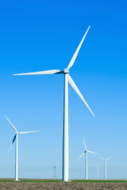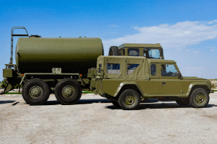If you’re a building owner, a business owner, or another key decision maker in an industry where the potential for fire is high, then it’s important to understand whether or not you need a fire suppression system. The fact is, in many settings, fire suppression systems are necessary to quickly detect fire and automatically activate—before equipment or employees are put in harm’s way.
But how do you know if you need a fire suppression system? In this article, we’re exploring what a fire suppression system is and common industries where the use of one is necessary to properly mitigate risk.
What is a Fire Suppression System?
An integral part of keeping employees and equipment safe from fire damage, a fire suppression system is designed to suppress a fire as quickly as possible while also keeping it from spreading. Fire suppression systems work by activating if specific levels of heat or smoke are detected. While most fire suppression systems activate automatically, some can be triggered manually as well.
Once activated, fire suppression systems immediately release a fire suppression agent to suppress the fire and stop it in its tracks. Common fire suppression agents include FK-5-1-12, FM-200™, CO2, Purple K BC Dry Chemical Powder, and ABC Dry Chemical Powder.
There are a few different types of fire suppression systems, all designed with specific use cases. Fire suppression system examples include:
- Indirect Release Systems: These systems detect fire using flexible Firetrace detection tubing and suppress fires by delivering the agent through hoses and nozzles.
- Direct Release Systems: These systems detect fire using flexible Firetrace detection tubing and suppress fires by delivering the agent directly through the tubing.
- High Pressure Systems: These systems detect fire using flexible Firetrace detection tubing and suppress fires by delivering CO2 at high pressure through hoses and nozzles.
- Engineered Systems: These clean agent systems offer complete room protection (total flooding), typically tie in with building FACP, and comply with fire codes and requirements.
When is a Fire Suppression System Required?
Fire suppression systems are used in many different industrial and commercial settings where other kinds of extinguishing systems—like sprinkler systems—aren’t appropriate. Some common settings where a fire suppression system may be required include:
Manufacturing and Machining
There are many fire risk factors in manufacturing and machining settings, including flammable oil based coolants, exotic metals, and high-speed operations. These risks are made even more complex in lights out or lightly attended operations.
The most common classes of fire in this setting are Class B (flammable liquids) and Class D (flammable metals). Although water will put out a Class B fire, it is not an effective option. Oftentimes, a fire suppression system is needed to suppress the fire safely and quickly. Installing a fire suppression system in these environments can protect not only costly pieces of machinery, but also employees.
Wind Turbines

While turbine manufacturers go to great lengths to prevent fires, the potential for fire simply cannot be completely engineered out. A fire that’s not quickly detected and suppressed in a single nacelle can quickly destroy the unit, leading to millions of dollars in repair costs.
A fire suppression system in a wind turbine can automatically detect and suppress the fire. And, because fire suppression systems are designed with clean agent suppressants—those that do not leave residue upon evaporation—they are perfectly safe for use around mechanical and electrical equipment.
Container Yards
Container yards are filled with potential risk factors, including hydraulic systems, diesel fuel, and electrical panels. Each of these risk factors has the potential to create a fire that cannot be suppressed with water. An unsuppressed fire not only brings the potential for damaged equipment and injured employees, but also a significant loss in revenue and disruptions to the global supply chain.
A fire suppression system in a container yard can protect your bottom line from costly repairs and maximize equipment uptime while also protecting your people from the dangers of fire.
Electrical Panels
Electrical equipment carries a high potential for fire—from arcing to numerous types of malfunctions. Electrical panel fires can cause significant downtime, depending upon the severity of the damage it causes, not to mention the cost of equipment repair.
Electrical panel fires are also complex for two primary reasons. First, electrical fires cannot be put out by water, which eliminates the possibility of sprinkler systems. Second, the wrong type of fire suppressant agent can cause damage to the panel. That’s where a fire suppression system with a clean agent that won’t damage equipment comes in. Clean agents are equipment-friendly and non-conductive, and they’re safe for use around people.
Military Vehicles and Aircrafts
Any form of transportation comes with the potential for fire, and it is essential to protect the people and equipment that defend our country.
On the ground, non-electrical fire suppression systems can be used to detect and suppress fires in fuel tanks, engine compartments, wheel wells, lithium battery cabinets, and cargo areas safely and effectively. In the air, fire suppression systems in helicopters, fighters, bombers, and surveillance planes can mitigate the potential for a fire to spread and cause injury or damages.
How Long Does It Take to Install a Fire Suppression System?
Once you’re ready to move on with purchasing a fire suppression system, you may wonder how long it’ll take to install the system. Fire suppression system installation typically takes between 4-16 hours, depending on the type of suppression system that’s being installed. Additional variables include the complexity of the installation and the types of components that are needed in the installation.
The installation itself should only be completed by authorized distributors, application engineers, or trained professionals. Upon completion of installation, the system will go through the commission process, which is essentially a final inspection of all the system components.
The work you’re doing is important. Firetrace systems can help protect you from costly repairs, downtime, and the potential loss of life that can come from an unsuppressed fire. To learn how Firetrace can work for your specific application, reach out to us for a free quote.


